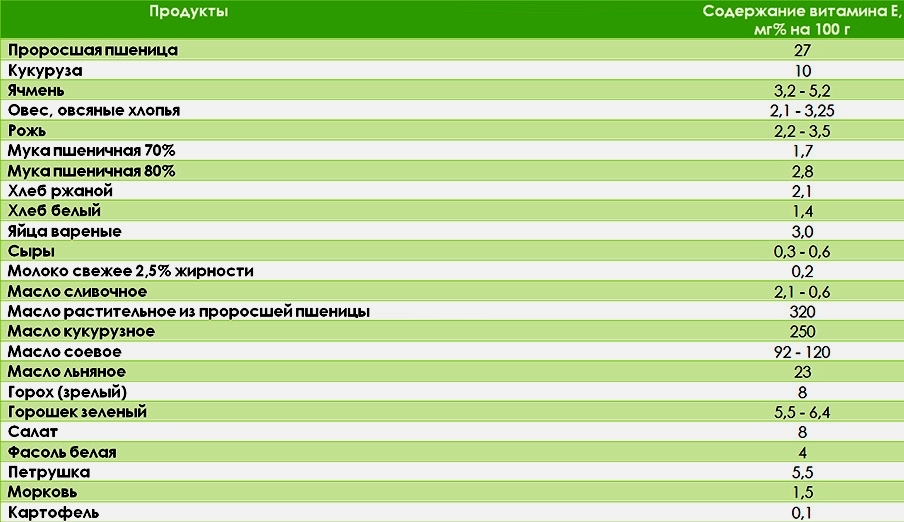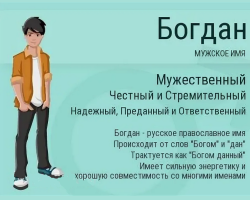An article on how to take vitamin E correctly before pregnancy and during it.
Content
- Why do you need vitamin E during pregnancy, pregnancy planning, what does it give?
- How much vitamin E is needed per day?
- How to find out that there is not enough vitamin E?
- How to take vitamin E to take vitamin E when planning pregnancy to a woman and a man: dosage
- Vitamin E: What period of pregnancy is it?
- Vitamin E in the first, second, third trimester of pregnancy: Dosage
- Overdose of vitamin E during pregnancy: consequences
- What products are the most vitamin E?
- Video: Vitamins during pregnancy. Vitamin E, tocopherol during pregnancy and lactation
Everyone knows that vitamin E is useful for men and women. But especially the need for this vitamin increases for a woman during pregnancy. Do not allow pregnancy to break into the early stages, and then give birth to a healthy child - this is what we owe vitamin E. If you want to know how important vitamin E is for women and men, and then bearing, read this article.
Why do you need vitamin E during pregnancy, pregnancy planning, what does it give?
Pregnant women of vitamin E will need one and a half times more than before pregnancy. Doctors are sure that without him a child in the womb cannot fully develop.
Why is Vitamin E so useful, or tocopherol?
- Strengthens the walls of small vessels, and protects them from destruction
- Helps to form a placenta
- Helps the work of the heart
- Protects blood cells (red blood cells) from damage
- Supports hemoglobin in the blood normally
- Does not allow blood clots
- Accelerates healing wounds on the skin
- Thanks to him, new capillaries are formed
- Improves the endocrine gland (hormone formation)
- Helps to be absorbed to proteins
- Strengthens immunity
- Improves vision, and memory
- Vitamin A is better absorbed with him
Attention. In women who did not have enough vitamin E during pregnancy, kids with a vulnerable sexual system are more often born.

How much vitamin E is needed per day?
Women before pregnancy, and during it, vitamin E requires a different amount:
- Women planning pregnancy-10-15 mg
- Women at the beginning of pregnancy - 17 mg
- After a long lack of vitamin E, if there is a threat of miscarriage-100-200 mg, up to 1000 IU, and then, a short time
You need to take vitamin E 1 capsule 1 time per day or 2 times a day, after eating or during it. Fat should be present in food. The course of treatment with vitamin E is 14 days.
Note. On some packages with vitamin E, there is a designation ME (international units). The ratio of MG to Me \u003d 1: 1.21.
How to find out that there is not enough vitamin E?
If there is not enough vitamin E the following ailments can be:
- Muscles, arms and legs hurt in naughty
- Fast fatiguability
- It feels like goosebumps climb the skin
- Prostration
- A rare pulse
- Frequent colds
- Bruises on the body for no reason
- Hair loss
- Sudden occurrence of age spots
- Miscarriages in women in early pregnancy
- Problems towards worsening with memory, hearing, vision
- Violation of menstruation
- Frequent constipation
How to take vitamin E to take vitamin E when planning pregnancy to a woman and a man: dosage
If a woman cannot get pregnant in a young family, there may be problems with conception with a man. And if so, then the doctor will prescribe vitamin E to both spouses.
For men from vitamin E, the next benefit:
- Increasing sperm activity, and increase their number
- Spermatozoa is better, mobile, tenacious
Men usually take vitamin E 200-300 mg per day, 1 month, or until the wife becomes pregnant.
Vitamin E is useful for men and with impotence. In this case, vitamin E is taken 200 mg per day, 1 month.
Vitamin E: What period of pregnancy is it?
The opinions of gynecologists diverge: Some believe that the entire period of pregnancy, a woman needs to take vitamin E, others-only in the 1st and 3rd trimester, and the 2nd trimester can receive vitamin E from food.
Vitamin E in the first, second, third trimester of pregnancy: Dosage
1st trimester of pregnancy. For the normal development of the child, vitamin E is attributed to the doctor throughout pregnancy, but most of all the woman needs him in the first trimester.
At the beginning of pregnancy vitamin E useful Together with folic acid (vitamin B9).Both vitamins do the following work:
- Participate in the formation of all organs of the child
- Do not allow a miscarriage
- Prevent the formation of blood clots
- Reduce the risk of congenital diseases of the child
The amount of vitamin E, which must be taken per day - 100 mg.
Attention. The lack of vitamin E is at first pregnancy is manifested by toxicosis (nausea and vomiting, a decrease in appetite, drowsiness, distortion of taste, intolerance to some odors).
2nd trimester of pregnancy. At this stage, vitamin E:
- Improves blood circulation in the placenta, so that the child receives a sufficient amount of oxygen
- Thanks to vitamin E, the hormone gonadotropin is produced in the placenta, which helps it better develop
- If a woman’s body has a sufficient amount of vitamin E, the skin will become elastic, and there will be no stretch marks after childbirth
Doctors advise attention:In the second half of pregnancy, a woman does not need to take vitamin E separately, it will be enough from a complex of vitamins for pregnant women (“alphabet”, “complivitis”, “vitrum”, “triovit”) and food.
In the 3rd trimester of pregnancy Vitamin E promotes the production of prolactin, and then breast milk for the baby. If there is a lack of vitamin E, a woman may not be developed at all, so in the third trimester you also need to take vitamin E.

Overdose of vitamin E during pregnancy: consequences
Pregnant woman vitamin E needs to take strictly according to a doctor's prescription. If the woman herself decided to take vitamin E, and bought several vitamin complexes at once or drinks vitamin E in more quantities than provided, then maybe overdose of vitamin E in a woman. You will feel or notice the following ailments:
- Nausea
- Diarrhea or bloating
- Redness or rashes on the skin
- Weakness and dizzy
- Fast fatiguability
- Seizures in the muscles
- Vision of vision
- Nervous disorders
- Reduced blood sugar
- Liver problems (increase, bilirubin increase)
- Problems with the kidneys
- Blood pressure rises
- At the beginning of pregnancy-bleeding due to poor blood coagulation, there may be blood clots
- At the end of pregnancy - premature birth
Overdose of vitamin E The mother may affect and on the child when he is born:
- The little weight of the child
- Congenital heart disease
- The child was born dead
- Often a child is born with health disorders
Contraindications to the use of vitamin E are available for people with the following diseases:
- Allergy to vitamin E
- Discinesia of the bile ducts
- Severe heart disease
- Thyroid hyperthyroidism
- Cirrhosis of the liver
- Hemophilia
- Kidney diseases
Attention. Vitamin E is incompatible with medicines against the formation of blood clots, anti -inflammatory and iron -containing, a break between the techniques of these drugs and vitamin E should be at least 8 hours.
What products are the most vitamin E?
The most useful vitamin E is natural tocopherol, that is, from food.
What you need to know in order to keep vitamin E more in food? What are our actions destroyed from food during cooking vitamin E?
- Contact with air and sun
- Subzero temperature
- Acidic and alkaline environment
- The temperature is more than +170 degrees Celsius
Vitamin E is most in such products (the amount of vitamin per 100 g of the product):
- In unrefined vegetable oil (from wheat germ - 149 mg, 47 mg of hazelnuts, 41 mg of sunflower, 41 mg, 39 mg, cotton - 35 mg, 32 mg of rice bran, and 29 mg, 15 mg, 15 mg, 15 mg, and 15 , 7 mg, olive - 14.4 mg, corn - 14.3 mg, soy - 8.2 mg, linen - 0.5 mg)
- Gorky pepper - 38 mg
- Sunflower seeds-26-35 mg
- In paprika - 29 mg
- In the almond-24-26 mg
- In dried oregano - 18 mg
- In the hazelnut - 15 mg
- In a dry basil - 10.7 mg
- In cedar nut - 9.3 mg
- In dried parsley - 9 mg
- In red and black caviar - 7 mg
- In egg yolks - 4.8 mg
- In turmeric - 4.4 mg
- In Kurag and tomato paste - 4.3 mg
- Spinach - 2.9 mg
- Butter - 2.8 mg
- In beef, chicken, duck, goose fat - 2.7 mg
- Whole grain wheat bread - 2.7 mg
- In Kisza, caminet - 2.5 mg
- In salt mackerel - 2.4 mg
- In salt herring - 1.7 mg
- In pork sala - 0.6 mg
- In fresh tomatoes, broccoli, corn grains, patch beans - 0.5 mg

Remember that in excess vitamin E is much more dangerous than if it is not enough.
Video: Vitamins during pregnancy. Vitamin E, tocopherol during pregnancy and lactation
We advise you to read:








During pregnancy and at the planning stage, I was accepted by the Minisan complex, in it just all the vitamins and trace elements necessary for the future mother and baby. Especially pleased with the presence of iodine, Selena and Vitamin D.